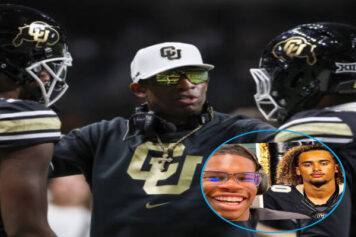This is Part II of our project that examines how utilizing both education and alternative sports can benefit underserved youth. You can read Part I here.
Costs Getting Real
Tuition has become an increasingly prickly subject for university-attending families. Since 1981, the general cost of tuition (broadly speaking) in the United States has run more than 100 percent ahead of the Consumer Price Index (CPI), whereas the median family income has risen 27 percent.
This situation is placing university education increasingly out of reach for those with little disposable income or the ability to obtain credit. As a result, many students and their families view selective universities, which often carry a high sticker price, as simply unaffordable.
In a 2008 study by Lillis and Tian, they identify the six most important factors that influence college choice. Tuition cost and location were the runaway winners, leading to the conclusion that lower-income groups are less likely to apply to more expensive institutions, thereby seriously limiting their postsecondary opportunities.
In addition, underserved students have a strong preference to remain close to home as a result of feeling constrained by financial circumstances.
Financial aid opportunities have also risen sharply, due to the College Access and Opportunity Act (2006). And with individual universities using their endowments to provide assistance for lower socioeconomic background students, the actual price for many lower- and middle-income students has not increased significantly.
Moreover, many elite universities offer free tuition to incoming students who could otherwise not afford to attend. Prospective students and their families often do not understand this reality.
The importance of education is substantiated by salary research (The College Payoff ) that showed a lifetime earnings boost of 73% for those that obtained a bachelors degree vs a high school diploma while some studies have shown that the return on investment (ROI) for some universities exceeds that of basic equities, gold holdings, and 10-year Treasury bonds.

(Photo Credit: Row 360)
It is no secret that education has routinely been touted as one of the best investments a person can make.
The Hack
As educational attainment continues to diverge among different strata of society, the strategic importance of getting a top-level education is an urgent issue. But with admission rates now well below 10 percent for the most selective universities, should applicants from lower socioeconomic backgrounds even bother with a process that seems stacked against them?
What is this education game? How does the education ladder truly work? Is there a way for academically qualified, students from lower socioeconomic backgrounds to hack the seemingly complex and contradictory university admissions system?
The trick to any successful hack is to fully understand the desired outcome and work backwards to take advantage of loopholes encountered along the way. Sadly, many youth from lower socioeconomic backgrounds do not fully understand the ramifications of the seemingly smaller decisions they make in their adolescences and subsequently get left behind.
How can we help young people from this demographic fully understand the landscape in order for them to make decisions in their best currentand futureself-interest?
And..The Role of Sport
It is well known that participation in sports in and of itself offers a huge boon to those that seek to improve time management skills, improved personal focus, build a network of shared identities and even Shulman and Bowen, in their book The Game of Life, state a clear claim of support to the adult athlete with the following quote: One of these characteristics can be thought of as drivea strong desire to succeed and unswerving determination to reach a goal, whether it be winning the next game or closing a sale. Similarly, athletes tend to be more energetic than the average person, which translates into an ability to work hard over long periods of timeto meet, for example, the workload demands placed on young people by an investment bank in the throes of analyzing a transaction. In addition, athletes are more likely than others to be highly competitive, gregarious and confident of their ability to work well in groups (on teams). (p. 101).
If you dig a little deeper to identify what connects these top tier universities you will find that the prevalence of alternative sports (sports that are mainly non-revenue generating and are often considered fringe activities) is an important strategic similarity.
It is here that opportunity meets need. Of the top universities in the country (those ranked in the top 50 by the annual USNews ranking) 100% of them provide institutional support for at least two of the following sports: Rowing, Fencing, Squash, Water Polo, Lacrosse, and / or Diving. These are examples of the sports attracting supported admissions and/or sport scholarships – a direct path to university and laddering up.

(Photo Credit: teamusa.org)
As an example of the odds – of the over 2 million boys involved in high school big name sports (Baseball, Football, Basketball, and Hockey) only 7% will even play in college and given that under 5% of those kids will ever see a game day check as a professional, coming out of an elite university and starting a job somewhere like McKinsey is nothing short of miraculous.
The world we now live in is moving towards and will be dominated by the skilled worker and the knowledge economy. This change will not happen right away, but the move is irreversible. Though exceptions to every rule exists, attending a university and a high end one at that is the odds on favorite way to succeeding in this new reality.
Being very good (or at least above average) in a sport or group where you are clearly an outlier puts you in a position to receive attention and focus that members of larger group cannot hope to get. When it comes to the college entrance game, elite universities want these applicants and are willing to throw money their way if they qualify academically.
Leveraging undermanning theory to create ones personal story of interestingness is an approach that can and should be forged early.
Success and Challenges: A CTC Case Study
Founded in 2006, the Chicago Training Center (CTC) is a free afterschool program that engages economically disadvantaged inner-city teens in the alternative sport of competitive rowing. CTC leverages rowing as means to improve young peoples physical and emotional well-being, encourage academic persistence, and raise their expectations for college and beyond.
CTC was conceived as a way to help target youth hack the college admissions system by establishing a high interestingness quotient and leveraging the undermanning theory. By engaging and training nontraditional crew athletes (namely low-income youth of color), the program creates a pipeline to selective colleges that have both rowing programs and strong diversity initiatives.
Of the 45 students enrolled in CTC during 2014/15, 64 percent were male and 36 percent female; 58 percent were Latino, 11 percent African American, 27 percent White, and 4 percent other. Approximately 55 percent qualified as low or extremely low-income, 23 percent had at least one parent who did not complete high school, and 58 percent had two parents without any college education. In addition, 50 percent of students lived in households where the primary language was not English.
At present, less than 70 percent of students in the Chicago Public Schools graduate high school within five years, and the majority of those who transition to college attend nonselective or somewhat selective local schools with extremely low institutional graduation rates. To date, 100 percent of teens who participate in CTC throughout their high-school years successfully graduate, and 90 percent have immediately transitioned to college, CTC now has more than 120 graduate alumni (defined as students who were at least year-long team members and have since graduated from high school).

(Photo Credit: chicagotrainingcenter.org)
Key findings from this group in a survey included:
Respondents parents had a college graduation rate of less than 30 percent. This points to potential issues surrounding a lack of understanding of college life and the admissions process.
The majority of respondents reported that their schools and/or parents supported their pursuit of higher education. Students seemed to understand the system of laddering up.
Respondents affirmed that grades were important and that they made decisions about their future based on some long-term plan. However, this interest in schooling was often matched with ignorance towards the nuances of navigating college financing; a distinct lack of school-based support in identifying the best colleges for them and how to approach that particular application process; and a knowledge gap in fully understanding college tiers and their importance. In short, there seem to be limits to their understanding of how to ladder up.
Location and cost were huge determinants of college choice for this cohort. Similarly, the six characteristics most influencing their college decisions closely mirrored those referenced by Lillis and Tian (2008)
Only 60 percent of respondents actively sought support during college when work/school life became challenging. This suggests an overall lack of confidence, indifference, or inability to be proactive and assertive in their own best interests.
When trying to get a job outside of college, respondents ideas of what would help them the most were categorically mixed. Though it is understandable that 18-year-olds would be less engaged in thinking about life post college, it was nevertheless concerning to learn how much fear, uncertainty, and passivity trumped excitement, focus, and assertiveness.
Responses demonstrate that while CTC participants recognize the role of a college education in laddering up, and can identify key strategic opportunities in the college admissions process, they often back away from pursuing the best education theyre qualified for, for cultural and/or personal reasons.
(Photo Credit: Montan Butsch)
This requires further examination. It must also be noted that some CTC alumni have suspended or failed to complete their college educations, whether due to financial, academic, or personal issues. This suggests that, for target youth, simply understanding how to hack the post-secondary system is not enough: more work still needs to be done to build motivation, self-efficacy, and long-term goal setting.
Bringing the argument to your hood
Youth from lower socioeconomic backgrounds are now in the position to present themselves as a commodity to the highest echelon universities, assuming they can meet minimum academic standards and demonstrate that interestingness. Accessing the higher education system has moved into a game of Strategy and Marketing on the part of the target youth and they occupy a position of advantage that has never been fully leveraged.
The plight of the inner city kid is well documented. All one has to do is watch documentaries like Hoop Dreams, Through the Fire, and Benji or Hollywood dramas like Friday Night Lights, Blue Chips, or He Got Game to understand the perspectives, realities, and complexities faced by these kids.
Through a combination of mass media saturation, huge disparities of wealth, and a largely inadequate public schooling system, it is easy to understand that the pull for a professional sports career is strong. But often the pull to the bright lights and inflated bank accounts obscure the reality on the ground.
Helping underserved youth, particularly those who have grown up in generational poverty, ladder up is an extraordinarily complex endeavor. Education is not a destination but a launching pad, and this understanding is invaluable.
Hacking the system by using the already strong interest in sports is a no-brainer. In a game that requires many moves by many players, self-advocacy is the best tactic. As Malcolm Gladwell outlined the characteristics of a Rock Star in his famed article Getting In a youth that can wrestle with the idea of being confidently different and exhibiting clear traits of interestingness stands to benefit from the majority of lifes opportunities.

(Photo Credit: chicagotrainingcenter.org)
The Argument Broken Down
Young people from disadvantaged backgrounds often lack the resources, support and insight in a manner that is relevant to them. Following the crowd is the easy thing to do. Access often does not show up on your doorstep and a certain amount of intrepidness is required to see and understand the many choices available.
Socioeconomic mobility is strongly tied to education and the tangential benefits it brings. University selectivity matters. Networks matter. Experience matters. The best way to ladder up in American society is through these vehicles.
Using the interest in sports to stack the deck in your favor is a tool that every underserved youth that loves sports ought to utilize. That drive, commitment, and willingness to put it all on the line is the trait that is wildly rewarded in American society.
With your back against the wall shouldnt you look for the most interesting and strategically impressive way out? Using alternative sports in this undermanning way is that tool. Use it.
As the philosopher Seneca wrote, luck is what happens when preparation meets opportunity.
***
Katie Vasey contributed to the research and writing of this project. She is a causal Research Fellow in the Institute for Human Security and Social Change at La Trobe University, Australia. Vaseys teaching experience and research background includes: medical anthropology, human rights, mental health, humanitarianism, ethnographic and qualitative research methods and public health.
To access this story’s academic references, you can do so here.





